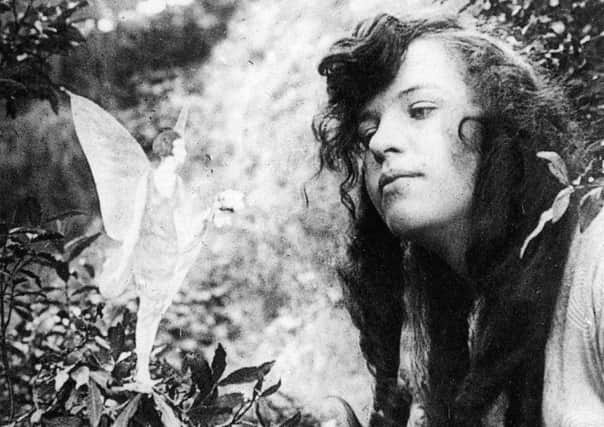One hundred years on from the famous Cottingley hoax, why people still believe in fairies


It was a few months after two schoolgirl cousins borrowed a camera, left their house in West Yorkshire and visited a nearby beck that the fuss really began. Initially, what they had captured on the developed plates had been kept within the family and a close circle of friends, but in 1918, reproductions of their astonishing photographs found a global audience.
To marks the centenary of those infamous Cottingley fairies a number of academics have been looking back through the archives in the hope of discovering why so many people were taken in by the photographs, which look to modern eyes so obviously fake.
Advertisement
Hide AdAdvertisement
Hide Ad“Frances Griffiths and Elsie Wright created one of the biggest hoaxes in British history,” says Dr Richard Sugg, a lecturer at Durham University, who has contributed to a new book Magical Folk, British and Irish Fairies. “It’s up there with the faking of the Piltdown Man. The girls started by challenging themselves in order to fool their immediate circle. They ended up attempting to hoodwink the world.”
When the photos were finally exposed as bogus, those like Arthur Conan Doyle who had championed became a laughing stock, but their readiness to believe in something otherwordly was, says Dr Sugg, understandable.
“The pictures emerged when the First World War was still raging There was talk about angels being seen over the battlefield, particularly at Mons and some claimed to have seen the souls of the dead hovering over the Cenotaph, when it went up in Whitehall.
“Conan Doyle’s son Kingsley had been killed only days before the signing of the Armistice and he had also lost two brothers-in-law and two nephews. Small wonder that he was among the many who were fascinated by spirituality and the paranormal.”
Advertisement
Hide AdAdvertisement
Hide AdAnd it seems that fascination has not gone away. In a survey, undertaken as part of research for the book, an astonishing 57 per cent of respondents said that they saw fairies “occasionally”.
“Do not run away with the idea that these were all hopeless romantics,” adds Dr Sugg. “Professions ranged from doctors to engineers, professors and psychologists. And interestingly only four per cent of those surveyed were under 20.” Debunking other myths about the fairies, less than half of the sightings described them as having wings and not all were the size of butterflies – apparently one Scottish man saw one that was over 15ft high.
“Belief in fairies as is old as time itself,” says co-editor of the book Dr Ceri Houlbrook. “Yorkshire, for example, is a particularly good spot for the ancient habit of nailing coins to trees which are near a well or small stream.
“It was thought the water source might have medicinal powers and the coins were a away of ensuring the prayers offered there were granted. There’s a particularly fine one at Ingleton and it shows just how steeped in mystical beliefs we have been.”
Advertisement
Hide AdAdvertisement
Hide AdMagical Folk attempts to trace that history and looks at the whole story of little (and not so little folk) from 500AD until the present day with Dr Sugg contributing the Yorkshire section. “There is a great story about a chap called William Butterfield, who was the attendant at White Wells baths in Ilkley,” he says. “One morning in 1815, he had trouble opening the door. When he did, he swore he saw dozens of fairies all taking a bath. William was reluctant to talk further about his experience, but locals were keen to vouch for his honesty and sobriety.”
Frances died in 1986, and Elsie in 1988. Together, they inspired books, films and ephemera from the Cottingley escapade has fetched thousands of pounds at auction. The fairy business proved to be a lucrative one and a century on it seems little has changed.
Magical Folk, British and Irish Fairies, Gibson Square, £16.99.